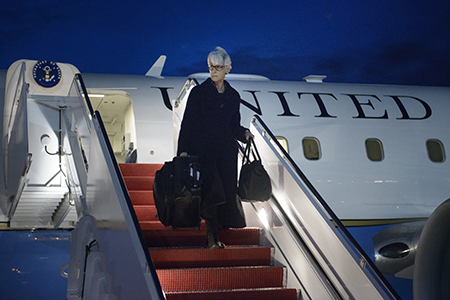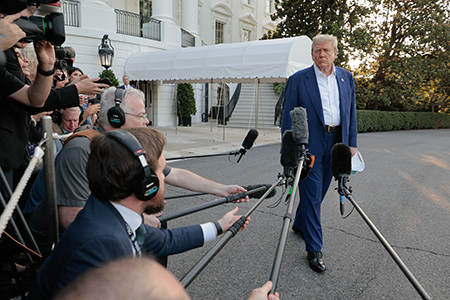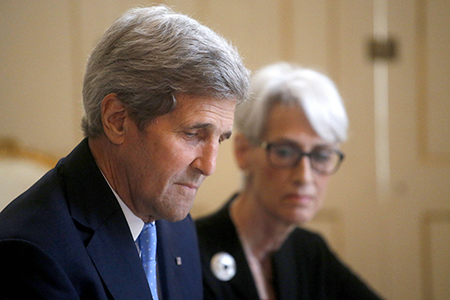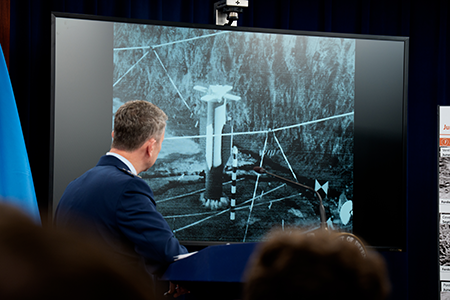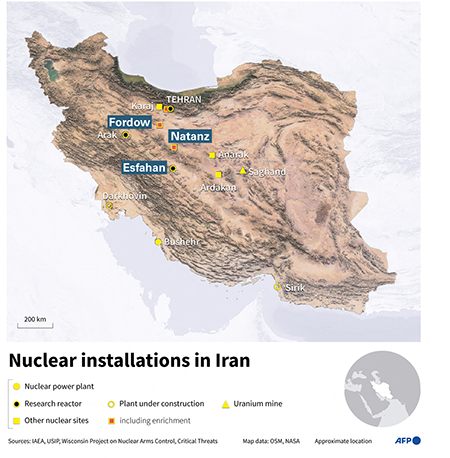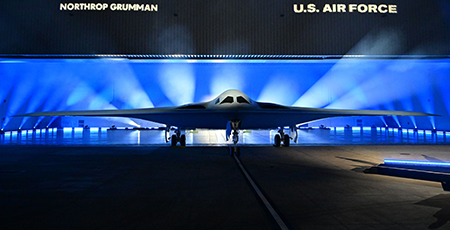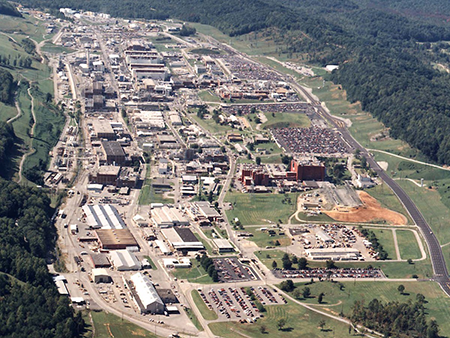July/August 2025
By Moeed W. Yusuf
On April 22, 2025, a terrorist attack ripped through the town of Pahalgam in the disputed territory of Kashmir, killing 26 people. Minutes later, a crisis between nuclear rivals India and Pakistan was in the making as the Indian media began pointing fingers at Pakistan. A war frenzy built in India in the following days, with the government announcing multiple punitive steps against Islamabad, including unilaterally putting into abeyance the 1960 Indus Waters Treaty that protects the overwhelming majority of Pakistan’s water supply.1 Pakistan responded with its own diplomatic measures, downgrading the already fractured relationship further.
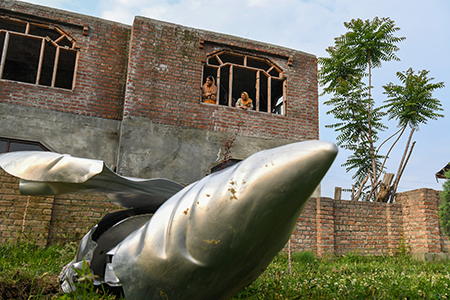
By the time the crisis ended nearly three weeks later, the region had witnessed the most expansive use of military force and technology since India’s and Pakistan’s nuclearization in 1998. India initiated hostilities in the early hours of May 7 by launching multiple missile and artillery strikes deep inside Pakistan. Pakistan responded, leading to an aerial engagement and the downing of multiple Indian jets. The next 48 hours featured massive drone operations and the use of air defenses to neutralize the drones by both sides. The night of May 9 and morning of May 10 produced swift escalation. India targeted multiple Pakistani air bases with cruise missiles, including a critical air base situated in the city of Rawalpindi, just minutes from where Pakistan’s military chain of command is headquartered. Pakistan retatliated by using short-range ballistic missiles against Indian military infrastructure.
The spread and scale of the military attacks and use of new technologies by both rivals was unprecedented.2 The choice of targets, especially by India, was also highly escalatory. Before U.S. Secretary of State Marco Rubio announced an abrupt end to the crisis May 10, both countries had entered uncharted territory, seemingly committed to continuing military operations to deny the other escalation dominance, if not to establish their own. South Asia truly seemed at the brink of a major war.
This article examines the Pahalgam crisis through the lens of brokered bargaining, a crisis-management framework that centers on the role of the United States and other third parties in determining crisis behavior and the risk of escalation.
Brokered Bargaining in India-Pakistan Crises
Originally presented in my 2018 book, Brokering Peace in Nuclear Environments: U.S. Crisis Management in South Asia, the term “brokered bargaining” reconceptualizes nuclear crisis behavior by positioning it within a three-way bargaining framework involving two regional nuclear rivals and powerful third-party brokers.3 At its core lies the notion that during crisis moments between regional nuclear powers, the third party plays a pivotal role in brokering de-escalation, not merely as a passive observer, but as an active, strategic intermediary navigating between both sides’ red lines. Regional antagonists attempt to compel or deter each other, but also seek to influence the third party, often deferring to its cues even as the rivals attempt to exhibit some strategic autonomy in decision making to manipulate the risk of war and extract maximum concessions from the brokers. Ultimately, the innate risk of nuclear war ensures that the third party’s overriding interest—ahead of its broader geopolitical equities—remains swift de-escalation and termination of the crisis.
Brokered bargaining has featured prominently in each of their conflicts. India, Pakistan, the United States, and other important countries have internalized the triangular dynamic in their crisis strategies over the past quarter century. Starting with the 1999 Kargil war, the first decade of nuclear crisis management in South Asia saw the United States, supported by other third parties, proactively intervening early on. They looked for the quickest way to de-escalate tensions, even momentarily overshadowing their larger foreign policy equities.
As India-U.S. relations grew into a strategic partnership, the U.S. propensity to play down the middle with an almost singular focus on de-escalation loosened somewhat. After a mini crisis in 2016 and a more significant one three years later, an initial U.S. response heavily tilted in India’s favor emboldened New Delhi to use limited military force. Although this made crisis management more complex, especially in the Pulwama crisis in 2019, when India and Pakistan ended up in an aerial dogfight, the United States and other third parties’ willingness to broker de-escalation was never in doubt in either case.4
The timing of the tensions over the Pahalgam attack was extremely concerning from the perspective of South Asian crisis management. The conflict occurred against the backdrop of a massive shift in U.S. global posture. President Donald Trump’s plans to pull back the United States from its role as the global sheriff raised serious concerns about the willingness of the principal broker to engage in a crisis far away from home. This added to the region’s crisis-management conundrum, already challenged due to the absence of robust bilateral escalation-control mechanisms between India and Pakistan. The two countries do not have meaningful arms control treaties or escalation control protocols and have failed to use their communication hotlines dependably in past crises.
Would the brokered bargaining framework—which is assumed to have permanence across time and space in the absence of dependable bilateral crisis management—hold, or would Washington leave New Delhi and Islamabad to themselves to pull back from the brink? As the two sides entered the Pahalgam crisis, the answer to this question was central to how the situation would play out.
The Pahalgam Crisis
India and Pakistan started the crisis in a familiar pattern, assuming the centrality of the third party and its eager availability as broker. Immediately after militants struck in Pahalgam April 22, India began playing on the Western world’s propensity to associate Pakistan with terrorism by blaming the attack on an alleged offshoot of a Pakistan-based terrorist outfit. As with the Pulwama crisis, India promised a tough response, with Indian Prime Minister Narendra Modi vowing to punish “every terrorist and their backers.”5 Also consistent with previous crises, Pakistan called for an investigation into the attack and signaled its preference for calm, while simultaneously emphasizing that it will respond in kind to any Indian use of force. Pakistani officials pointedly reminded the world of the nuclear context and “the prospect of a full-scale military conflict in the region” should India flex its military muscle.6
These signals of resolve from both sides are meant to put third parties on notice to prevent major war, and they drew a swift global response, featuring a third-party script that was virtually identical to previous crises. Shortly after the attack, sympathies and messages of international support poured in for India. Trump posted: “Prime Minister Modi, and the incredible people of India, have our full support and deepest sympathies.”7 Some capitals went further, hinting at support for India’s need to react to the terrorist incident. Russian President Vladimir Putin stated: “This brutal crime has no justification whatsoever. We expect that its organizers and perpetrators will face a deserved punishment.”8 April 25, amid war frenzy in the Indian media, the Indian defense minister claimed that U.S. Secretary of Defense Pete Hegseth had “supported India’s right to defend itself” during their phone conversation.9 The United States had conveyed an identical message six years earlier during the Pulwama crisis.
In light of these messages, Indian leaders reasonably could have perceived the situation to be analogous to the days after the onset of the Pulwama crisis. At the time, they had concluded that they had international backing to use force against Pakistan and executed an airstrike across the international border.
Temporarily Going Off-Script
Then came the twist—unprecedented and with uncertain implications. Amid intensifying war rhetoric from both sides, Trump hinted April 26 that his broad vision of an inward-looking United States applied to nuclear crisis management in South Asia. Asked whether he was willing to engage in de-escalating tensions, he said: “I am very close to India and I’m very close to Pakistan, as you know.… I am sure they’ll figure it out one way or the other. I know both leaders.”10
Trump’s message could have been read in different ways. India could have felt further emboldened that the United States would stand by if it used force against Pakistan. Pakistan, for its part, may have taken heart from the fact that Trump had equated his outlook toward the two rivals. More significantly, the U.S. president’s statement would have caused alarm in other third-party capitals, such as Riyadh, London, Abu Dhabi, Berlin, Beijing, and Moscow, who generally follow the U.S. lead in these situations, because it implied that the principal crisis broker, despite the advantage of having the institutional memory of leading crisis diplomacy in South Asia, may in fact be opting for strategic detachment. Regional and global capitals seemed to have taken note. What followed was a flurry of signaling and diplomacy by other third parties as they sought to fill the U.S. vacuum. Their message was restraint, which was even more important now given that none of them had ever tested their crisis influence over India and Pakistan without the United States in the lead.
On April 28, the Russian Foreign Ministry issued an “appeal to both sides for restraint and constructive dialogue.”11 China joined in, asking for restraint while backing Pakistan’s calls for an investigation into the Pahalgam attack. Iran, whose role had been muted in previous crises, offered to mediate. Its foreign minister visited Islamabad and New Delhi to help calm tensions. Saudi Arabia also activated its mediatory role and conducted shuttle diplomacy as the situation escalated into actual combat.
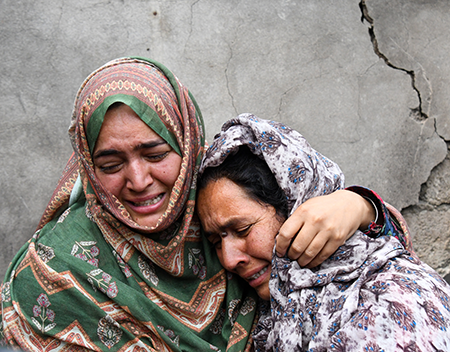
India continued to maintain a resolute stance. Modi announced April 29 that he had given “complete operational freedom” to the Indian military to choose the “mode, targets, and timing” of military action against Pakistan.12 Indian External Affairs Minister S. Jaishankar communicated India’s determination to Rubio May 1, warning that the Pahalgam attack’s “perpetrators, backers and planners must be brought to justice.”13 Jaishankar gave a similar message to his Russian counterpart a day later.
India’s initiation of hostilities May 7 confirmed that its leaders felt they had enough diplomatic cushion to flex their muscle despite attempts by regional third parties to dissuade them from doing so. Washington’s seeming detachment would not have gone unnoticed in New Delhi. Even after the initial night of missile launches inside Pakistan, U.S. Vice President JD Vance stated: “we’re not going to get involved in the middle of war that’s fundamentally none of our business.”14 Although this initially worked to India’s advantage, the elephant in the room was obvious to all, including India: how to de-escalate the crisis without the United States brokering an exit?
A Return to Familiar Ways
The following 48 hours would answer this question unequivocally. Amid swiftly escalating tit-for-tat military action and no obvious off-ramps, the most fundamental premise of brokered bargaining kicked in: the possibility that nuclear war, no matter how low, forces the principal third party to seek immediate crisis de-escalation above all else, and the regional rivals find this risk factor too costly to ignore. From this point on, the crisis plays out as competition between the rivals to extract maximum gains from the third party while agreeing to terminate hostilities.
By May 9, the Trump administration had determined that the “conflict was at risk of spiraling out of control” and that crisis diplomacy by regional actors was proving insufficient.15 Uncertainty over the U.S. commitment to play broker disappeared. Vance and Rubio worked the phones intensely to seek an immediate ceasefire. Other capitals quickly put their weight behind this welcome effort, impressing upon India and Pakistan the need to terminate the crisis. The Group of 7 states issued a rare joint statement urging “immediate de-escalation.”16 Virtually all other countries, including China, called for calm, as well.
Rubio succeeded in convincing both sides to agree to a ceasefire without waiting to work out its specific contours. He informed his Pakistani and Indian counterparts that their rival was willing to terminate the crisis if they would desist from further military action.17 Predictably, Washington’s messaging to New Delhi and Islamabad highlighted the risks of a broader conflagration while presenting inducements. Pakistan, for instance, was offered “U.S. assistance in starting constructive talks in order to avoid future conflicts.”18
Once the United States assumed the lead, Indian and Pakistani sensitivity to third-party preferences was obvious given their abrupt decision to end hostilities. This is especially true in India’s case because it did not feel its crisis objectives had been met. Subsequent statements by Indian leaders left no doubt that India had left the crisis dissatisfied. Pakistan also quickly dialed down tensions once the United States made its intent clear. Pakistani Prime Minister Shehbaz Sharif cancelled a National Command Authority meeting he had called,19 this being the only move from either side during the crisis that could ostensibly be considered a nuclear signal.
In the early afternoon of May 10 in South Asia, Rubio made the U.S. success public in a social media post: “Over the past 48 hours, @VPVance and I have engaged with senior Indian and Pakistani officials… I am pleased to announce the Governments of India and Pakistan have agreed to an immediate ceasefire and to start talks on a broad set of issues at a neutral site.”20 Trump later boasted: “We stopped a nuclear conflict. I think it could have been a bad nuclear war … so, I’m very proud of that. I said to India and Pakistan: Let’s stop it. If you stop it, we’ll do trade. If you don’t stop it, we’re not gonna do any trade … and all of a sudden, they said, ‘I think we’re gonna stop.’”21
It remains unclear what triggered the sudden U.S. decision to reclaim its role as the principal broker in India-Pakistan crises. One account suggests that New Delhi approached Washington and other capitals, seeking their intervention in the face of Islamabad’s unexpected military response to India’s targeting of Pakistan’s air bases.22 The New York Times, on the other hand, reported that the United States intervened due to its fear that rapid escalation might be turned into a nuclear exchange. According to this report, “what drove Mr. Vance and Mr. Rubio into action was evidence that the Pakistani and Indian air forces had begun to engage in serious dogfights, and that Pakistan had sent 300 to 400 drones into Indian territory to probe its air defenses. But the most significant causes for concern came late Friday [May 9], when explosions hit the Nur Khan air base in Rawalpindi, Pakistan, the garrison city adjacent to Islamabad.”23 At the time, there was also chatter in Indian media—later proven to be false—of possible leakage of nuclear radiation caused by one of the Indian strikes.24
The Future of Crisis Management in South Asia
The Pahalgam crisis followed the disturbing trend where each new South Asian conflict has become more complicated and more expansive in the use of military force than the previous one. Ultimately, it also exhibited the enduring logic of brokered bargaining that has thus far prevented a major regional catastrophe.
Nevertheless, South Asia remains on edge. Although both militaries have pulled back their forces to honor the ceasefire, Modi has declared that the ceasefire is “only paused.”25 India also has declared a “new normal,” claiming that it will be justified in waging war against Pakistan in response to any future terrorist attack. The potential triggers for a future crisis have expanded in other ways, too. For instance, Pakistan formally has declared that any Indian attempt to follow through on its threat to divert Pakistan’s waters under the Indus Water Treaty will be seen as an “act of war.”26
Moreover, with the introduction of new technologies, whose use unnerved both sides in the recent fighting, crisis trajectories would become even more complex. Drone warfare and stand-off missile strikes will compress the time for decision-making and allow the combatants to test thresholds without immediately risking escalation. The expansive list of targeting and counter responses that dramatically escalated the Pahalgam conflict are not likely to be rolled back.
With no serious bilateral escalation control mechanisms on the horizon, the United States and other third parties will remain critical to South Asian crisis stability because of the structural imperatives of nuclear risk and the psychological need for face-saving exits for the two rivals when tensions rise. The United States must remain on guard, shedding any uncertainty about its willingness to play broker in coordination with other important states.
That said, it should be clear that third party-led crisis management is not a recipe for sustained peace and stability. No matter how effective, brokered bargaining will remain full of risks and challenges associated with the involvement of multiple actors in a fast-moving crisis environment. Sustainable peace in South Asia is only possible by ensuring that crises are prevented from occurring in the first place. This requires the world to push for a serious Indian-Pakistani dialogue that seeks to address the adversaries’ outstanding disputes and contentious issues—the very root cause of bilateral tensions. Trump would do well to follow up on his promise to facilitate this conversation in the interest of regional peace and stability. Failing that, South Asia will remain on the brink.
ENDNOTES
1. Aishwaria Sonavane, “After Pahalgam, India Faces Tough Security and Diplomatic Choices,” The Diplomat, April 28, 2025.
2. Christopher Clary, “Four Days in May: The India-Pakistan Crisis of 2025,” Stimson Center, May 28, 2025.
3. Moeed W. Yusuf, Brokering Peace in Nuclear Environments: U.S. Crisis Management in South Asia (Stanford: Stanford University Press, 2018).
4. Moeed W. Yusuf, “The Pulwama Crisis: Flirting with War in a Nuclear Environment,” Arms Control Today, May 2019.
5. “India will Pursue Kashmir Attackers to the Ends of the Earth, says PM Modi,” BBC News, April 24, 2025.
6. “Defence Minister Khawaja Asif Warns of ‘All-out War’ if India attacks,” Dawn, April 24, 2025.
7. Donald J. Trump post on Truth Social, April 22, 2025.
8. “Trump, Putin, Meloni and Other World Leaders condemn Pahalgam Terror Attack,”
The Hindu, April 23, 2025.
9. “US Backs India’s Right to Defend Itself: Hegseth,” Times of India, May 2, 2025.
10. “US President Trump Confident Pakistan, India will ‘Figure Out’ Border Tensions,” Dawn, April 25, 2025.
11. “Russia Urges Pakistan, India to Exercise Restraint, Engage in Dialogue — MFA,” TASS News Agency, April 28, 2025.
12. “India Gives Army ‘Operational Freedom’ to Respond to Kashmir Attack,” France 24, April 29, 2025.
13. Indian External Affairs Minister Dr. S. Jaishankar on X (@DrSJaishankar), “Discussed the Pahalgam terrorist attack with US @SecRubio yesterday. Its perpetrators, backers and planners must be brought to justice,” May 1, 2025.
14. Morgan Phillips, “Vance Says India-Pakistan Conflict ‘None of Our Business’ as Trump Offers US help,” Fox News, May 9, 2025.
15. David Sanger, Julian Barnes, and Maggie Haberman, “Reluctant at First, Trump Officials Intervened in South Asia as Nuclear Fears Grew,” The New York Times, May 10, 2025.
16. “G7 Countries Call for ‘Immediate De-escalation’ in India-Pakistan Conflict,” The Hindu, May 10, 2025.
17. Nic Robertson and Sophia Saifi, “‘We Hope Sense will Prevail,’ Pakistan’s Foreign Minister Says as Delicate India-Pakistan Ceasefire Holds,” CNN, May 13, 2025.
18. “Secretary Rubio’s Call with Pakistani Army Chief Asim Munir,” Readout, Office of the Spokesperson, U.S. Department of State, May 9, 2025.
19. “No Meeting of National Command Authority Scheduled: Defence Minister,” Business Recorder, May 10, 2025; Clary, “Four Days in May.”
20. U.S. Secretary of State Marco Rubio on X (@SecRubio), “Over the past 48 hours, @VP Vance and I have engaged with senior Indian and Pakistani officials,” May 10, 2025.
21. Anwar Iqbal, “Trump Says US Stopped Pak-India ‘Nuclear War,’” Dawn, May 13, 2025.
22. Middle East Eye on X (@MiddleEastEye), “In a CNN report, correspondent Nick Robertson stated that India reportedly sought assistance from the US, Saudi Arabia, and Turkey to help de-escalate the conflict,” May 11, 2025.
23. Sanger, Barnes, and Haberman, “Reluctant at First.”
24. “No Radiation Leak from any Nuclear Facility in Pakistan: IAEA,” The Hindu, May 15, 2025.
25. “India’s Modi Says Fighting ‘Only Paused’ in Wake of Conflict with Pakistan,” Al Jazeera, May 12, 2025.
26. Pakistani Prime Minister’s Office, “Prime Minister Muhammad Shehbaz Sharif Chaired a Meeting of the National Security Committee (NSC), Today,” Press Release, Prime Minister’s Office, April 24, 2025.
Moeed W. Yusuf is the president of Beaconhouse National University in Pakistan, a senior fellow at the Harvard Kennedy School’s Belfer Center, and the author of Brokered Bargaining in Nuclear Environments: U.S. Crisis Management in South Asia. He served as the national security adviser/special assistant to the prime minister of Pakistan from 2019 to 2022.


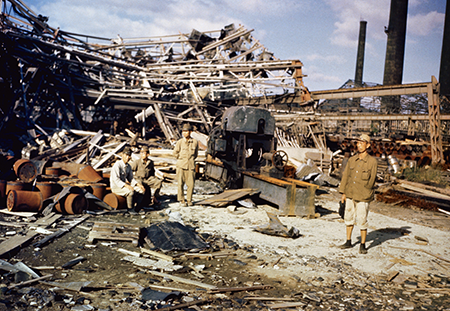 August 15, the day the war ended, my mother was sent to a temporary relief station. She helped to medically treat people who had been taken in for burns and other injuries. The sight of wounded people lying body to body on the auditorium floor was beyond description. My mother was assigned to follow the doctor from patient to patient, carrying antiseptic solution, but some wounds were so severe that she passed out on the spot. Once she came to her senses, she was relegated to cleanup work. She had to use a broom to sweep away the maggots that were swarming all over the survivors’ festering wounds. The maggots were as big as her thumb. She had never seen maggots that big and in such large numbers and hoped she would never see them in the future.
August 15, the day the war ended, my mother was sent to a temporary relief station. She helped to medically treat people who had been taken in for burns and other injuries. The sight of wounded people lying body to body on the auditorium floor was beyond description. My mother was assigned to follow the doctor from patient to patient, carrying antiseptic solution, but some wounds were so severe that she passed out on the spot. Once she came to her senses, she was relegated to cleanup work. She had to use a broom to sweep away the maggots that were swarming all over the survivors’ festering wounds. The maggots were as big as her thumb. She had never seen maggots that big and in such large numbers and hoped she would never see them in the future.